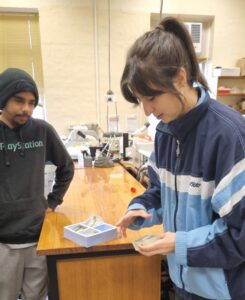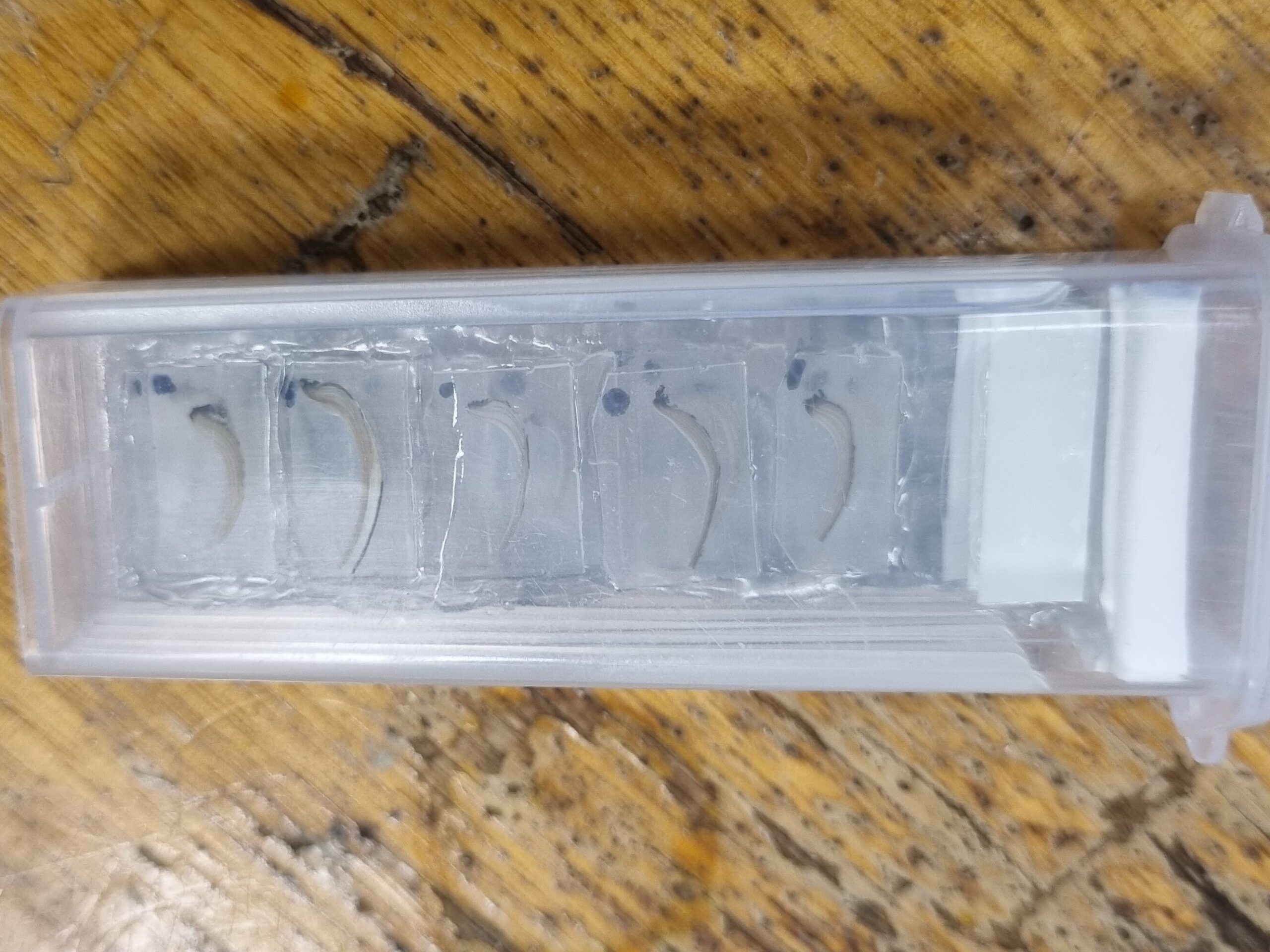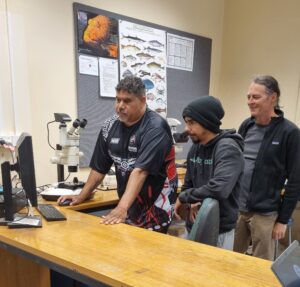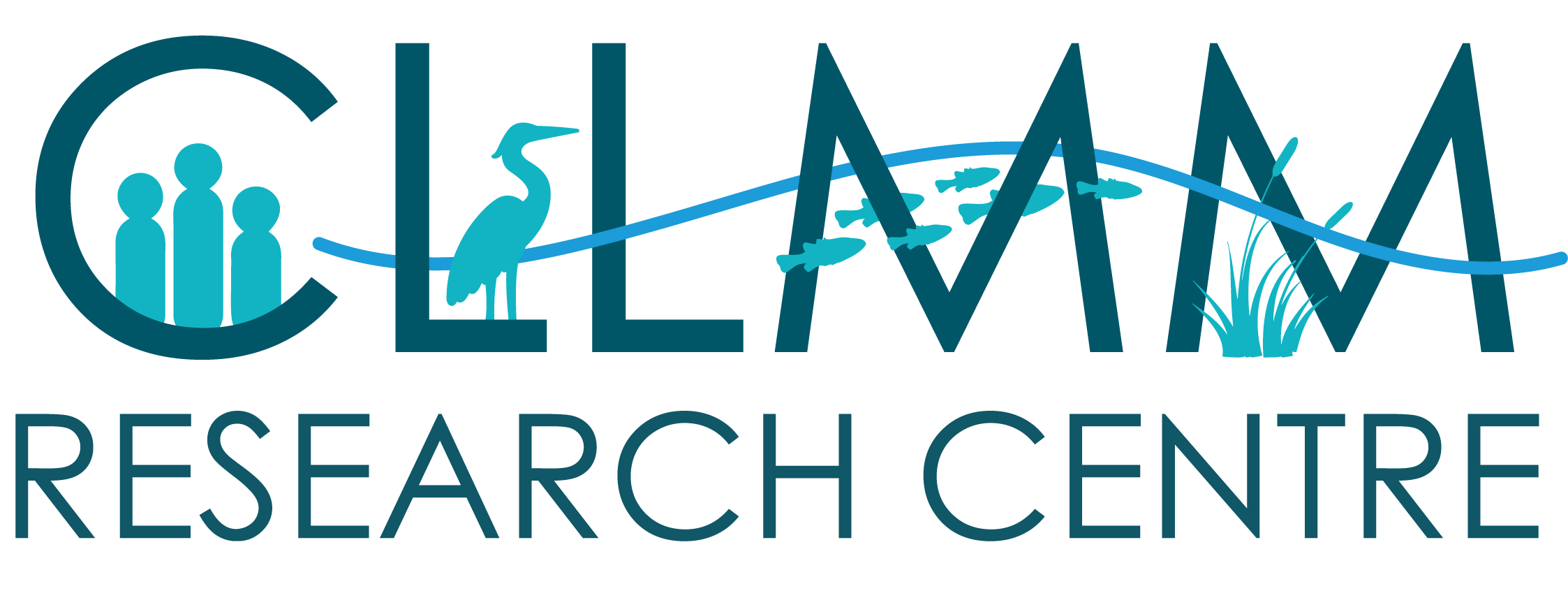Sue Ellison, Engagement Coordinator, CLLMM Research Centre
On Tuesday 28 October, I spent the day at the Marine Ecology Lab, Adelaide University, with Scotte Wedderburn and two Ngarrindjeri blokes – Lalo and Chase – both curious and involved in the CLLMM Lokeri project.
This visit followed on from our earlier work — collecting mussels in December 2024 and then weighing, measuring and dissecting them in July 2025. This week, we focused on finding out how old the mussels are.
Rhiannon Van Eck showed us the fascinating lab process: slicing through the shells using a fine diamond saw, then setting them in resin so she can safely cut thin sections. Each slice goes through the umbo (the ‘nose’ of the shell) — about the size of a fingernail — which we then examined under a microscope and projected onto a screen.
Each visible band on the shell represents a yearly growing season:
- wider bands = good conditions, plenty of nutrients
- narrow bands = tough seasons, possibly drought.
From our samples, the oldest Lokeri was 14 years old and the youngest was 4. The patterns clearly showed the good seasons and the hard ones.
All the Lokeri we studied were collected from three locations across Lake Alexandrina and Lake Albert. They’d been frozen since collection so we could carefully work through the process over time.
Such an amazing experience to see the story of each mussel revealed under the microscope — a record of years of changing conditions on Country.






This work forms part of CLLMM RC project: Muscles in the mud: engaging community power to monitor Lokeri (floodplain mussel) in the Lower Lakes. The citizen-science project is strongly linked to community concern and the significance of Lokeri to Ngarrindjeri culture. Based on anecdotal information, the Lokeri population of the Lower Lakes has not recovered since the Millennium Drought. The project is garnering the interest of landholders, community groups and the Ngarrindjeri community to redress the deficiency in knowledge regarding Lokeri in the Lower Lakes.
